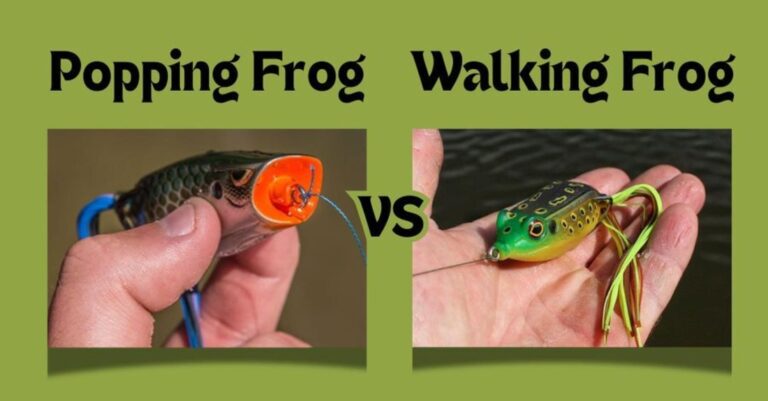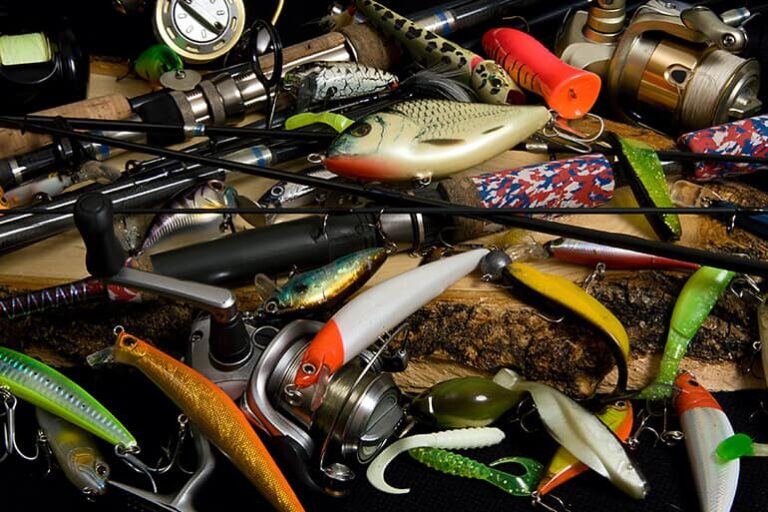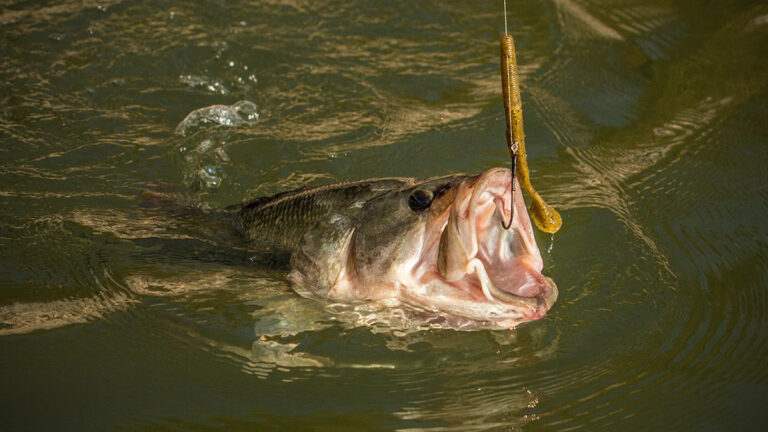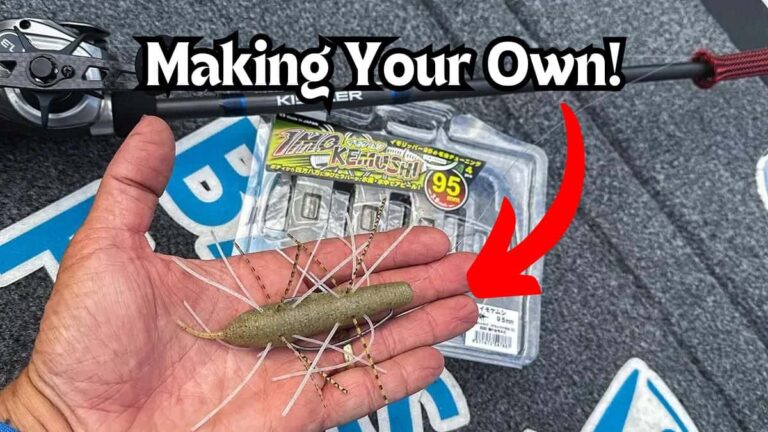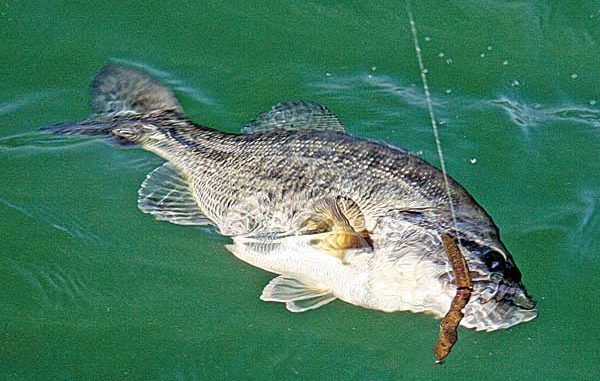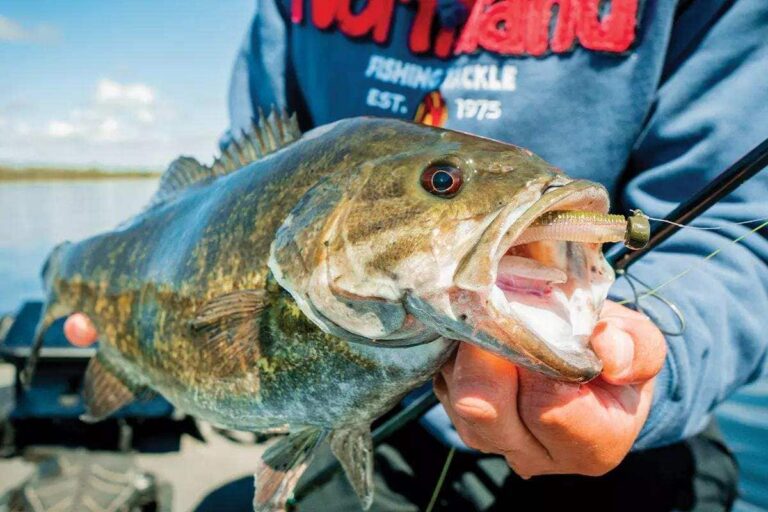How to Find Bass in a Pond: Complete Guide
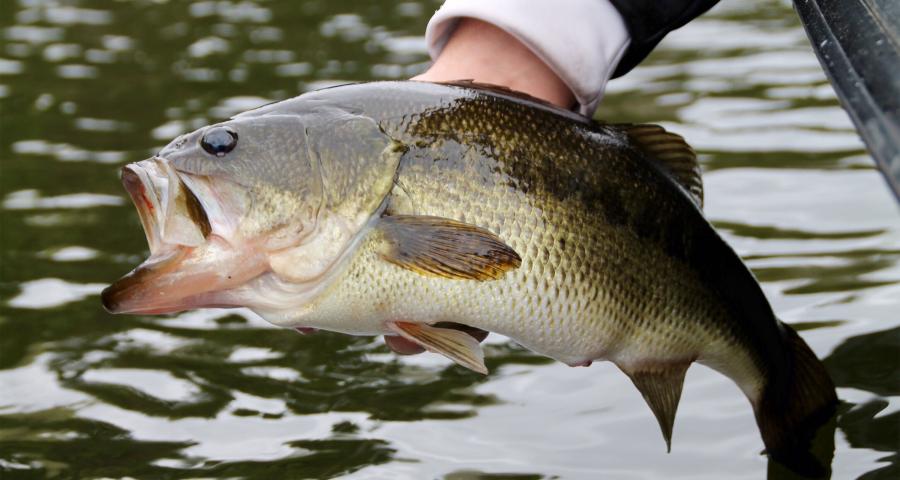
If you aren’t fishing where the bass are, you aren’t going to be able to catch any.
In order to stop casting where there aren’t any bass, you need to be able find exactly where the bass are depending on the weather, season, type of pond, forage, and other factors that all influence where bass will position themselves.
Where Do Bass Like to Be?
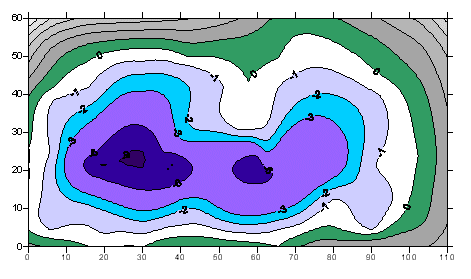
This is going to be very general, but it is important to know where bass ideally want to be hang out before discussing how different conditions move them around.
So while these locations are the ideal places to find bass, the conditions we will discuss later influence there specific location.
Trees and Logs
Bass love structure. Trees and logs are the most reliable structure to find bass.
The branches, holes, and splits in these laydowns offer bass tons of protection while also giving them opportunities to ambush prey.
Just think of how hard it can be to fish these without getting snagged. Bass’s predators have the same problems when trying to attack.
Bass can hide away in some corner, and jump out at unsuspecting prey.
This wood also gives bass lots of shade from the bright sun during the warmer months.
Rocks
Rocks give bass some of the same advantages of wood.
Bass can’t hide underneath the rocks, but they can blend in quite nicely to them which gives bass the same benefits through camouflage.
Rocks also attract other creatures that bass love to feed on. Crawfish, eels, worms, bugs, and other prey hang around the rocks.
Weeds and Grass
Weeds and grass also give bass protection and feeding opportunities.
They aren’t as protective since fish and predators can swim and even see through them.
But they do add a benefit that other structure doesn’t. Because they are living plants, the weeds and grass put out oxygen into the water.
And even though bass “breathe” underwater, they still need oxygen.
The more oxygen in the water, the more energy the bass will have.
Inlets and Flowing Water
Not all ponds are going to have these, but many do. Inlets are little creaks, pipes, damns, or spill ways that flow into the pond.
Bass love gently flowing water going to them. This influx of new water adds oxygen, bugs, baitfish, and other creatures.
It also gives a small current which disorients small prey, making them easy targets.
Depth Changes
Most ponds will have defined depth changes. Drop offs and troughs divide the pond up into different sections.
If bass don’t seem to be holding to structure, drop offs are the first place you should fish.
Also Read: Artificial Pond Structure
Finding Bass in the Morning and Evening

I lump morning and evening into the same category because bass tend to do the same things during both times of the day.
Each are low light and a bit cooler weather conditions. During the morning and evening, bass will usually be more spread out and shallower.
Bass won’t be holding very tightly to the structure they love. They take the low light conditions as an opportunity to get aggressive and hunt down prey.
Bass will get higher in the water column and cruise around in search of something to eat.
And with a lower risk of land based predators, bass move real shallow. This makes in much easier to hunt because the prey has nowhere to go.
The water is too shallow to go up or down, and they are pushed up against the shoreline.
I love fishing top waters during the morning and evening. So it also makes it a great time to fish for bass.
Finding Bass in the Mid Day
When the sun is high in the sky, bass tend to hold very closely to cover, stay under overhanging trees, or fall to the bottom of the pond.
Just like humans, bass don’t want to be baking in the sun all day. So the look for shade.
There are three types of shade. Shade from submerged cover, shade from overhanging trees, and shade simply from water depth.
The best submerged structure will be docks, laydowns, and lily pads.
When it comes to overhanging trees, the closer the branches are to the water’s surface, the better.
This is where being able to skip a bait comes in handy. Getting your bait way back under overhanging branches will always catch you daytime bass.
Bass will not go out to the middle of the pond, they will just drop down to the bottom of pond, just out of the reach of the sun’s rays.
Finding Pond Bass in the Spring
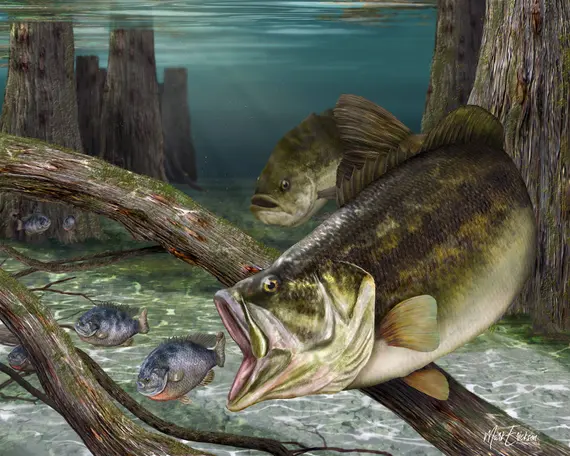
When I am talking about the spring, I am talking about the pre-spawn and the spawn.
It isn’t very hard to find spawning bass, so I will only be discussing how to find pre-spawn bass.
When bass are in the pre-spawn phase, they are moving from their deep, winter locations, and are searching for spawning grounds.
Essentially, pre-spawn bass are in between the deep winter areas and the shallow spawning areas.
Since ponds are typically small, this is actually a fairly small area. The earlier in the year it is, the closer to the winter areas they will be.
And the closer to the spawn it is, the closer to the shallow flats they will be.
The early pre-spawn bass will also be deeper in the water column, and slowly rise up as the year goes on and the water warms up.
Finding Pond Bass in Summer
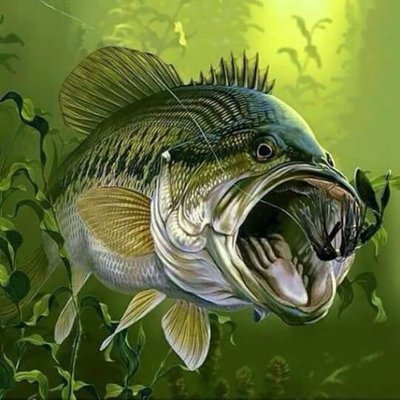
I consider the summer phase to start as soon as bass stop spawning. After the spawn, bass will usually head straight for cover.
They need to replenish after a long and tiresome spawn, and the cover gives them easily meal opportunities.
As the water continues to get very warm and the sun shines longer each day, bass really seem to love grass and depth.
In the hot months, bass seek out shade and especially grass. The warm water speeds up bass’s metabolism, and the oxygen released from the grass helps them keep up with this fast metabolism.
Seek out grass, shade, and the firs drop off from the bank.
Finding Pond Bass in Fall
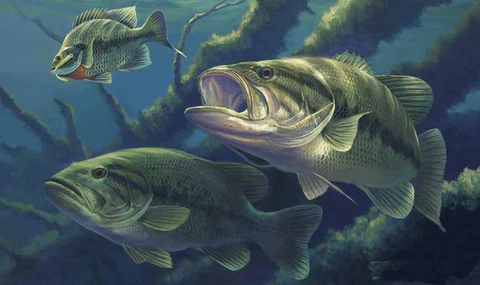
Fall pond bass are both easier and harder to find. This is because they are very spread out.
Both horizontally and vertically. It makes it harder to find bass because you can’t find specific areas to pick apart and hone in on.
But it makes it easier because bass are pretty much everywhere. So I can use fall bass lures that cover water.
Fall bass are very aggressive and swim all around the pond in search for as much migrating baitfish as possible.
I always prefer fishing faster and covering water, so the fall season is my favorite time to fish.
I don’t have to fish slow and hyper focus on high percentage areas.
I can just cover as much open water as I like and catch the cruising bass.
Finding Pond Bass in Winter

Bass are pretty easy to find in the winter. The hard part is getting them to bite. Pond bass do one of two things during the winter.
First, bass go to the deepest part of the lake. The deepest water stays the warmest throughout the winter, and bass as well as all fish will bunch up there.
Secondly, bass will hang around shallow rocks. This is not reliable, but during winter warm fronts, bass sometimes swim up into shallow rocks to warm up.
The sun heats up the rocks and the surrounding water gets a lot warmer.
This only happens in ponds, because the distance between the deep spots and the shallow ones is very short.
Cold Fronts and Storms
First and foremost, a cold front will make the water a bit colder. This is quite obvious, but should not be overlooked.
Even one cold front can drop the water temperature of a small pond by 2-4 degrees.
This may not seem like a huge difference, but it has a huge impact on fish behavior.
Fish do not know how long this front is going to last. For all they know, the cold front could last a very long time, and the water could continue to drop for weeks.
So fish will do one of two things during a cold front.
1. They will find and stick to structure and cover like glue. Bass will hold really tightly to structure and hunker down until the front is over.
It is very unlikely that they will swim more than a few feet from the cover throughout the entire front.
2. Fish will move out to the first depth change or drop off. Lots of fish will head out to deeper water during these cold fronts to stay warm and protected.
But it isn’t the winter season, so fish aren’t going to go all the way out to the deepest water.
The will only swim out to the first drop off and hunker down at that level.
They will also hold very tightly to the bottom and not rise much in the water column.
Wind and Choppy Water
Wind is actually very good for bass fishing. The windy and choppy conditions stir up the water, adds oxygen, makes your lures look more realistic, and get bass more active.
During windy conditions, one side of the pond will be choppy, and one side will be relatively calm.
Target the windy, choppy side. The wind blows in baitfish and stirs up the water which leads to a feeding frenzy for bass.
Also Read: Do Bass Bite in the Rain?
Portable Fish Finder
If you don’t know the bottom structure or depth of your pond, consider getting a portable fish finder.
Also, even if you know all the patterns and places where bass should be, they are still somewhat unpredictable.
You never really know exactly where they are. A portable, castable fish finder can help you out.
You can tie these mini fish finders onto your line and cast them around your pond.
They connect to your phone and give you a live, sonar view of the water below.
I have one and use it any time I get to a pond I’ve never fished.
They are fairly cheap, and are a great alternative if you don’t have a kayak or boat with a fish finder.
Reeling this In
Knowing where to fish is just as important as knowing how and what to fish.
Pond may look very simple, but there are so many factors that influence where bass will be at any given time.
Mastering pond bass fishing is harder than it may seem. But being able to find bass in your pond will help you drastically.

